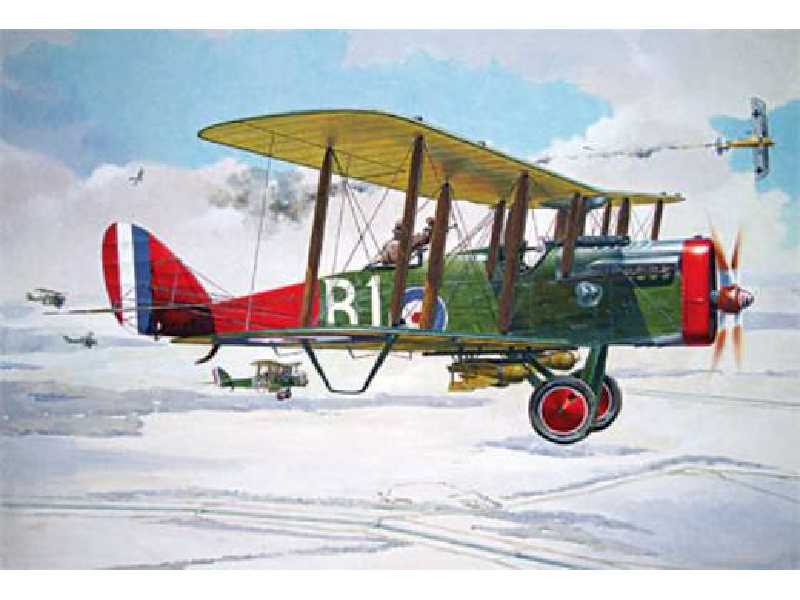- Reduced price




Paints and Glue are not included with any kit unless stated otherwise!
Versions:
| Performances | |
| Length | 9.22-9.35 m (depending on engine variant) |
| Wingspan | 12.94 m |
| Wing area | 40.0 m² |
| Empty weight | 1085 kg |
| Loaded weight | 1576 kg |
| Service ceiling | 4800 m (6700 for photo reconnaissance ) |
| Rate of climb | 305 m/min |
| Max speed | 190 km/h |
| Climb to height | 3500 m in 9 min |
| Engine | 1-Rolls Royce Eagle Mark I & II, Mark III & IV, Mark V & VI, Mark VII, Mark VIII. |
| Max power | 375 hp (289 kW) |
| Armament: | |
| - bombs | 209 kg |
| - machine guns | 1-0.303 Vickers (RNAS machines had two machine guns), 1-0.303 Lewis on Scarff mounting in rear cockpit |
No carriers available for this product.
The above shipping costs are for 1 item only.
You will see the final shipping costs when you place your order.
Manufacturer RODEN Oleksy Tykhogo 93 03067 Kijów Ukraine roden@roden.eu
Responsible person International Business Group Spółka Jawna Piotr Andrzejewski, Lidia Andrzejewska, Adam Andrzejewski Benedykta Hertza 2 04-603 Warszawa Poland ibgsc@ibg.com.pl +48228159150
@COMMENT_COMMENT@
@COMMENT_COMMENT@

@COMMENT_TITLE@
@COMMENT_COMMENT@